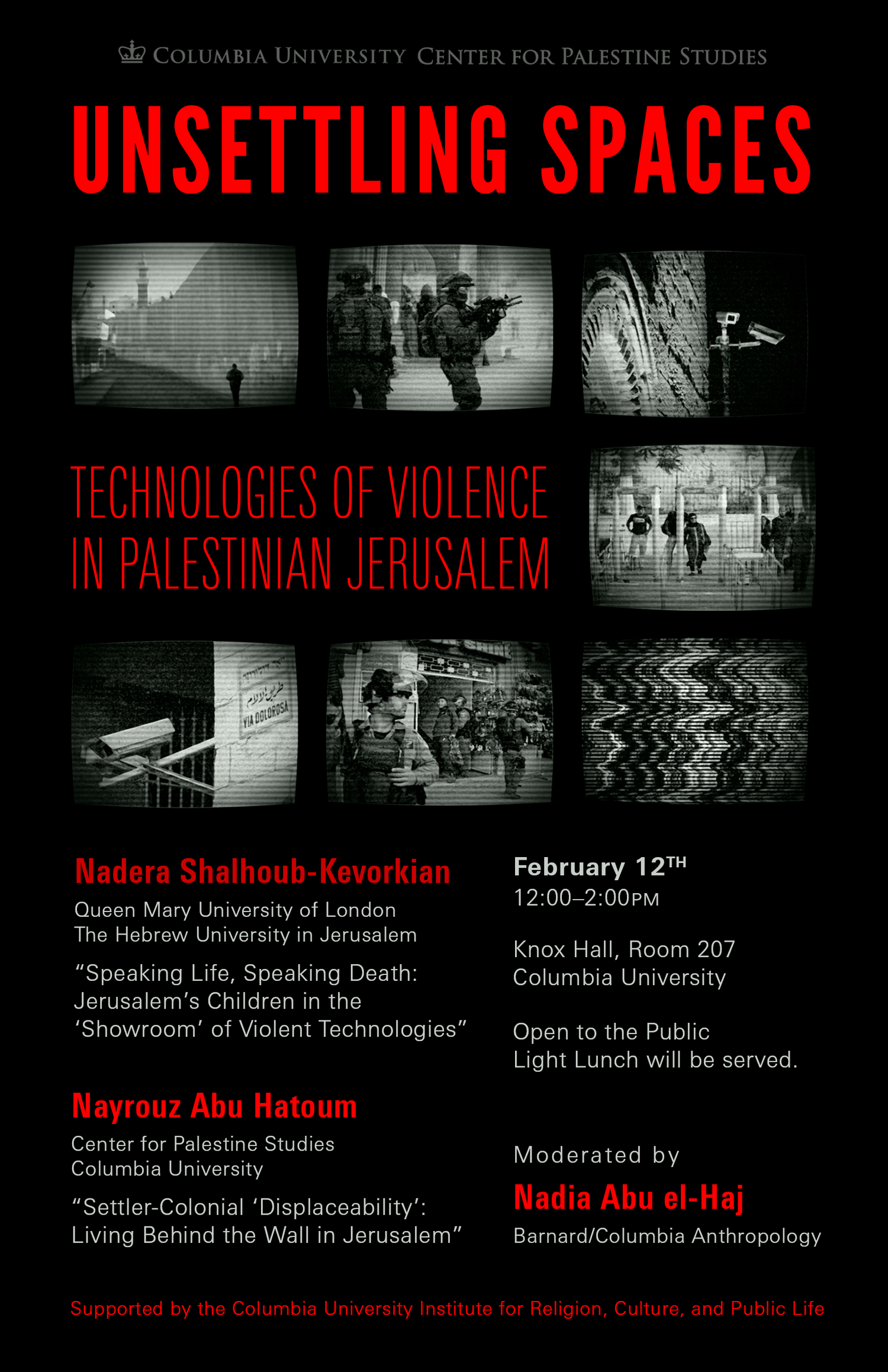Technologies of Violence in Palestinian Jerusalem
with Religion and the Global Framing of Gender Violence co-director
Nadera Shalhoub-Kevorkian
Moderated by Prof. Nadia Abu el-Haj
Department of Anthropology
Co-Director, Center for Palestine Studies
Columbia University
Presentations:
Speaking Life, Speaking Death: Jerusalem’s Children in the “Showroom” of Violent Technologies
Nadera Shalhoub-Kevorkian, Chair in Global Law, Queen Mary University of London and Lawrence D Biele Chair in Law, The Hebrew University in Jerusalem
Who speaks life and who speaks death in Occupied East Jerusalem? Children’s words and acts provide unique insight into the daily experiences of domination, colonization and occupation that are part of Israel’s "combat proven" politics. Surveillance, spatial control, imprisonment, torture, and professional training of security personnel have turned the old city into a showroom for states, arms companies, and security agencies to market their technologies as tested, and "combat proven." From over 600 letters written by children in the old city and observations of their daily walks to school, we can learn about the effects and refusals of these technologies of violence as they speak life. The geostrategic significance of controlling Jerusalem for Israel and the sacralized politics invoked to turn it into a “show room” speak death.
Settler-Colonial “Displaceability”: Living Behind the Wall in Jerusalem
Nayrouz Abu Hatoum, Postdoctoral Fellow, Center for Palestine Studies, Columbia University
Kufr Aqab, a neighborhood in Jerusalem that was cut off from the city after the construction of the Israeli wall in 2003 has been increasingly neglected by the Jerusalem municipality. In administrative and legal limbo, outside the reach of both Israeli state and the Palestinian Authority, Palestinian neighborhoods like Kufr Aqab are frontiers on which the contours of Israeli settler-colonial geography and demography are being drawn. Palestinians live there in a liminal zone facing the realities of disposability, displaceability, and infrastructural catastrophe. How do Palestinians live and thrive in such grey zones of colonial legality? Does dwelling in-between open up grounds for imagining a new (sovereign) future?

